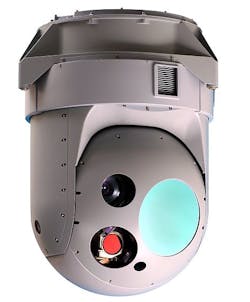Global military spending for electro-optical and infrared technologies to reach $8.38 billion this year
Predictions for market growth by 2024 were not released in today's announcement of the new ASD study, entitled Military electro-optical infrared (EO/IR) Systems Market Forecast 2014-2024.
Established military markets generally will achieve lower rates of growth in comparison to emerging military powers whose investment will drive global spending, analysts say.
The increased affordability of EO/IR systems combined with their interoperability and mission critical functions will lead emerging military nations to integrate them into new procurement and military modernization programs.
The report encompasses the 20 largest military EO/IR national markets: the U.S.; Saudi Arabia; China; United Kingdom; Russia; Canada; India; Israel; France; Japan; Australia; Germany; Turkey; Brazil; Netherlands; South Korea; United Arab Emirates; Italy; Spain; and Greece. The report also covers the three main end use submarkets: ground, naval, and airborne.
Related: Electro-optical sensor payloads for small UAVs
The report also profiles 20 companies in military EO/IR technologies: Airbus Group; BAE Systems PLC; Elbit Systems Ltd; Excelitas Technologies; Exelis Inc; Finmeccanica SpA; FLIR Systems Inc.; General Dynamics Corp.; Israel Aerospace Industries Ltd.; L-3 Communications Holdings; Leidos; Lockheed Martin Corp.; Northrop Grumman Corp.; Rafael Advanced Defense Systems Ltd; Raytheon Co.; Rockwell Collins Inc.; Textron Inc.; Thales Group; Ultra Electronics Holdings PLC; and United Technologies Corp.
The report details more than 250 industry-related contracts and programs to analyze current and future trends. Expected technological innovations include more powerful systems in smaller, lighter payloads and the move towards fully digitized and integrated military systems.
Technologies covered include imagery, infrared imaging, night vision systems and laser range finding systems for intelligence, surveillance and reconnaissance (ISR) and intelligence, surveillance, target acquisition and reconnaissance (ISTAR) capabilities of modern military forces.
The report defines the military EO/IR systems market as powered systems that use visible and non-visible light to provide visual feedback to military personnel or are integrated with other military systems. It includes three broad applications of EO/IR systems on airborne, ground, or naval platforms.
Systems covered include multispectral day and night imaging sensors, night vision goggles (NVG), laser rangefinders (LRF), forward looking infrared (FLIR) systems and infrared targeting pods.
The report excludes optics based seeking systems such as infrared seekers and laser seekers installed on kinetic systems and also exclude flare systems. The report also excludes unpowered EO/IR systems such as binoculars and will not include data storage of visual display systems for EO/IR platforms.
For more information contact ASD Media online at www.asdreports.com.
